Urban sculptures of Dilijan that are well-known and not so
City monuments have not only aesthetic function, they store information about bygone eras, history, and culture of the city. Dilijan is certainly no exception. The city retains both sculptures of the 19th century and monuments of the Soviet era. There are also new monuments that are gradually taking their place in the cultural and historical context of the city.
So, here is a selection of urban sculptures of Dilijan starting from the most popular and famous, to the hidden and unknown ones.
The monument dedicated to the 50th anniversary of Soviet Armenia
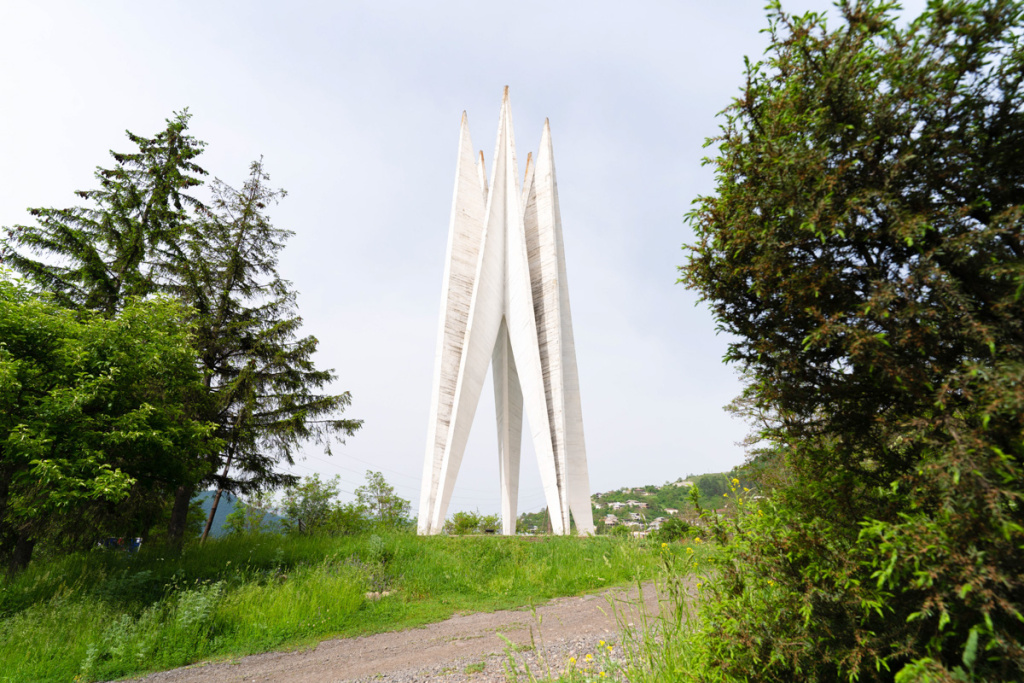
The authors of the monument are Seyran Avetisyan, Khoren Vatinyan, and Artur Tarkhanyan.
This monument can be surely considered the most recognizable monument of Dilijan, a distinctive symbol of the city. It’s visible from almost everywhere in Dilijan.
The monument was built in honor of the 50th anniversary of Soviet Armenia, in 1970. Each of the 5 parts symbolizes one decade. This monument can’t be described as outdated. The modernist style and minimalism, which is so trendy nowadays, give it a new symbolism and relevance. Now it is one of the main art objects of the city and fits seamlessly into the landscape.
It should be noted that Artur Tarkhanyan is considered to be one of the outstanding architects of Soviet Armenia and a world-famous representative of the modernist era. The most famous works of the architect are the old terminal of the "Zvartnots" airport, the Sports and Concert Complex after Karen Demirchyan, and the cinema "Russia".
The monument to the heroes of the film "Mimino"
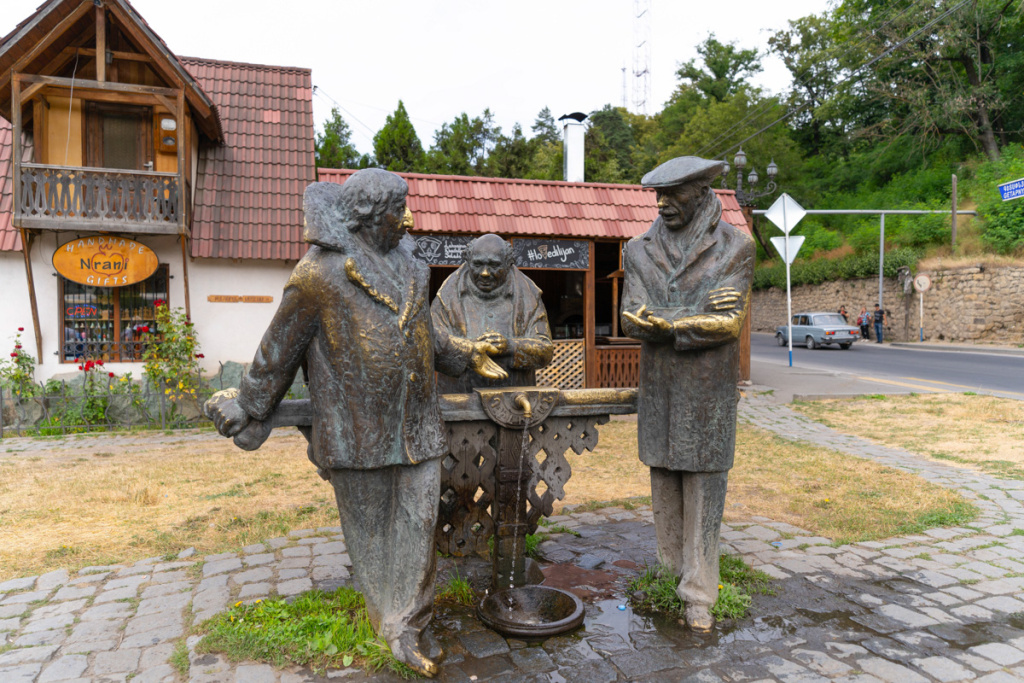
An excerpt from the film:
- Valik jan (dear Valik). If you just open the tap water in the kitchen, the water starts flowing. It ranks second in the world.
- And Yerevan ranks first, right?
- No, San Francisco does.
The author of the monument is Armenak Vardanyan.
The monument to the heroes of the cult Soviet film "Mimino", which was built near the artificial lake in 2011, is undoubtedly the most popular and photographed tourist attraction in the city. It is always crowded near the monument. At least we haven't seen it empty yet, except perhaps when the weather is bad.
Tourists take photos with bronze sculptures of the film's heroes and try Dilijan water, which was so praised by the hero of Frunzik Mkrtchyan, the good-natured truck driver Rubik Khachikyan "from sunny Dilijan".
The characters of Frunzik Mkrtchyan (Ruben Khachikyan), Valiko Mizandari (Vakhtang Kikabidze), and Ivan Volokhov (Evgeny Leonov) symbolize the friendship of three nations - Armenian, Georgian, and Russian. This bronze composition is not just a tribute to the legendary film, but also a symbol of sincere human relationships, which are far from political skirmishes and frays. Perhaps, that is why tourists are so fond of the film, the actors, and the sculpture.
The monument to the soldiers of the Great Patriotic War
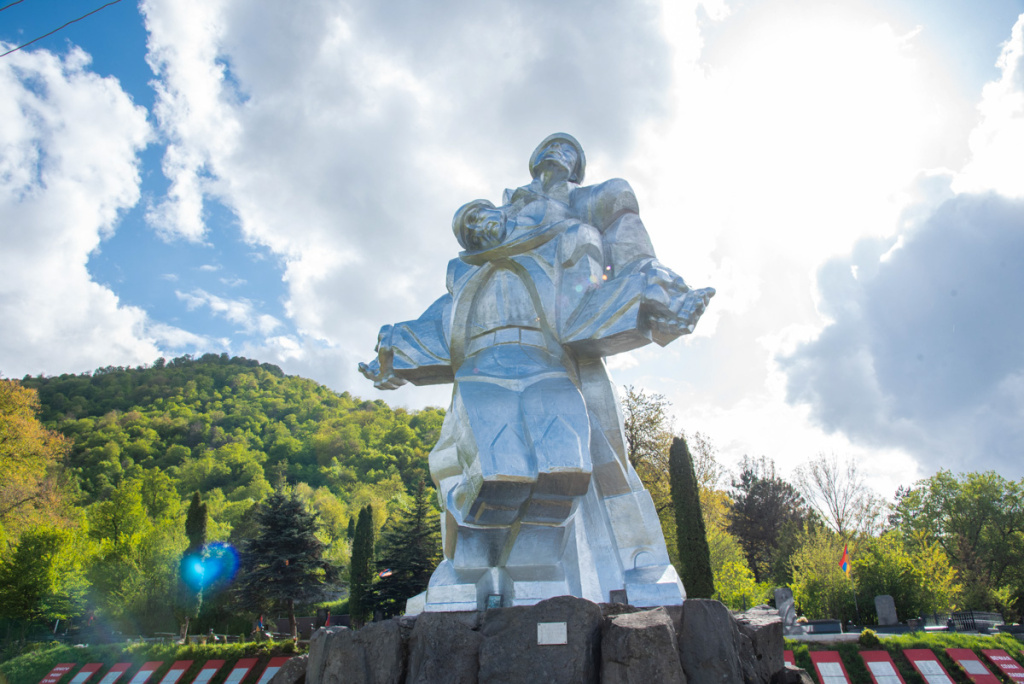
This is the biggest monument to Soviet soldiers in Transcaucasia, the author of which is the honored Dilijan sculptor and architect Khoren Vatinyan.
It's monumental and powerful, but at the same time very emotional and profound work. In the author's view, the memorial resembles a cross, an image of a warrior carrying a wounded comrade from the battlefield.
The complex includes commemorative plates with the names of 404 Dilijan citizens, who died during the Great Patriotic War (WWII). Not far from the memorial there is a mass grave of 22 veterans of the Great Patriotic War, who died from wounds in the Dilijan garrison hospital.
On the territory of the memorial complex, there is also a memorial fountain dedicated to the heroes of the Artsakh war.
"Armenia" in the likeness of the goddess Anahit
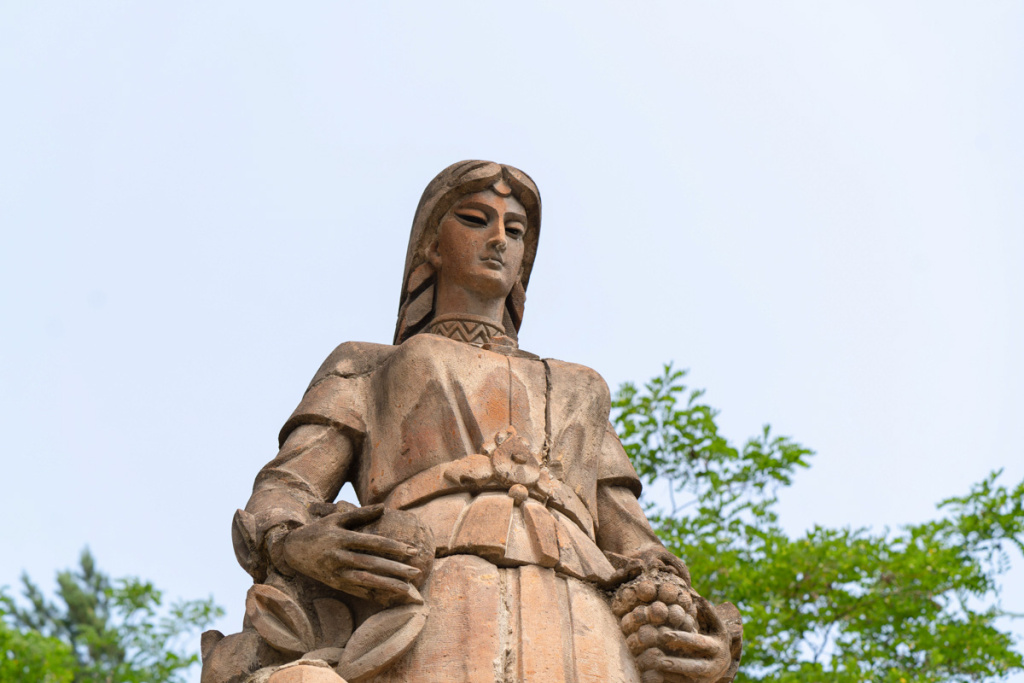
This sculpture was created in 1960 by Karlen Nuridzhanyan as part of the celebrations of the 40th anniversary of Soviet Armenia. Over several weeks, artists and sculptors worked right outside the building of the Union of Artists in Yerevan. As a result of this marathon (this is what we would call this event today), the sculpture "Armenia" was designed, which was soon transported to Dilijan.
Nuridzhanyan's contemporaries believe that in traits of the warlike yet tender girl, the author embodied the image of the goddess Anahit, who symbolizes fertility, motherhood, and rebirth.
"Rotonda" and the new amphitheater
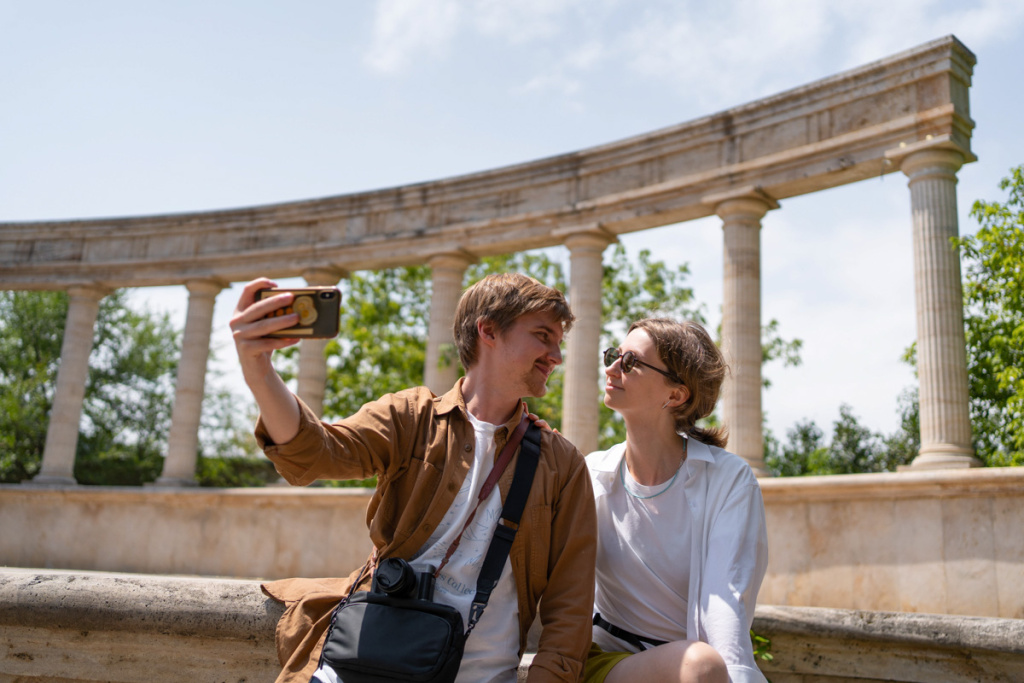
At the end of the XIX century, Dilijan residents at their own expense built a summer theater "Rotonda" in a picturesque corner of the city. In 1905, on the occasion of the 80th anniversary of the playwright Gabriel Sundukyan, his play “Pepo” was staged here for the first time, which was attended by famous figures of Armenian culture. Theatrical troupes of Tbilisi, Baku, and Alexandropol performed with tours in Dilijan. Unfortunately, in 1948 the summer theater was closed by the Department of Culture, but the tradition of holding concerts, literary readings, and other events in the "Rotonda" continued for a long time. Currently, the summer theater needs serious reconstruction.
In 2009, by the decision of the city authorities, an amphitheater was built in the center of Dilijan, which is a tribute to the cultural and theatrical traditions of the city.
It’s a small ensemble, which consists of an amphitheater, a sculpture of a girl with a jug in her hands, and a classical arch with columns, designed in the Greek style. Therefore, guests of the city are often unaware that this is a completely new amphitheater.
At present, various cultural and youth events are held in the amphitheater. One can get a wonderful view of Dilijan from here.
Matinov's fountain
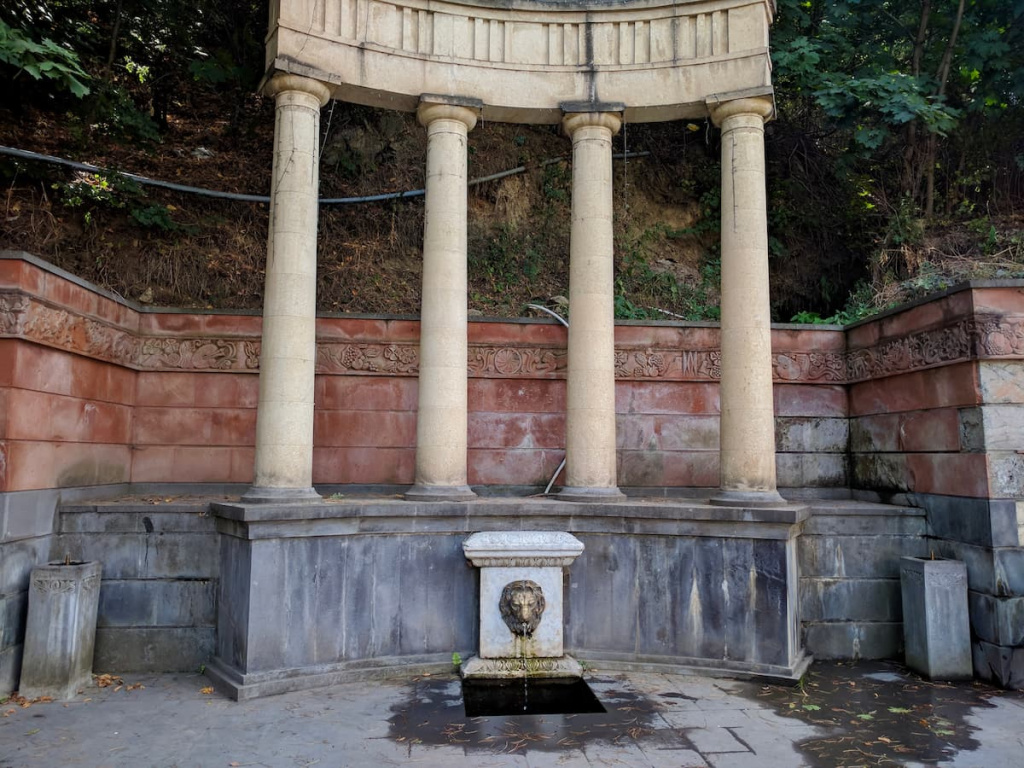
On the way to "Rotonda" take a look at an interesting, decorated fountain, which was installed more than a century ago.
This ornament memorial fountain was installed in 1880 by Vahan Matinov. Previously, such fountains were much more common, as affluent and famous families installed them in the quarters of the old city in memory of their families. The Matinovs belonged to that category, and they moved to Dilijan and Ijevan. It is known that Vahan Matinov opened a grocery store in the city.
The house of the Matinovs (Dilijan citizens call it "Matnants") was situated right opposite the fountain.
The king of the forest
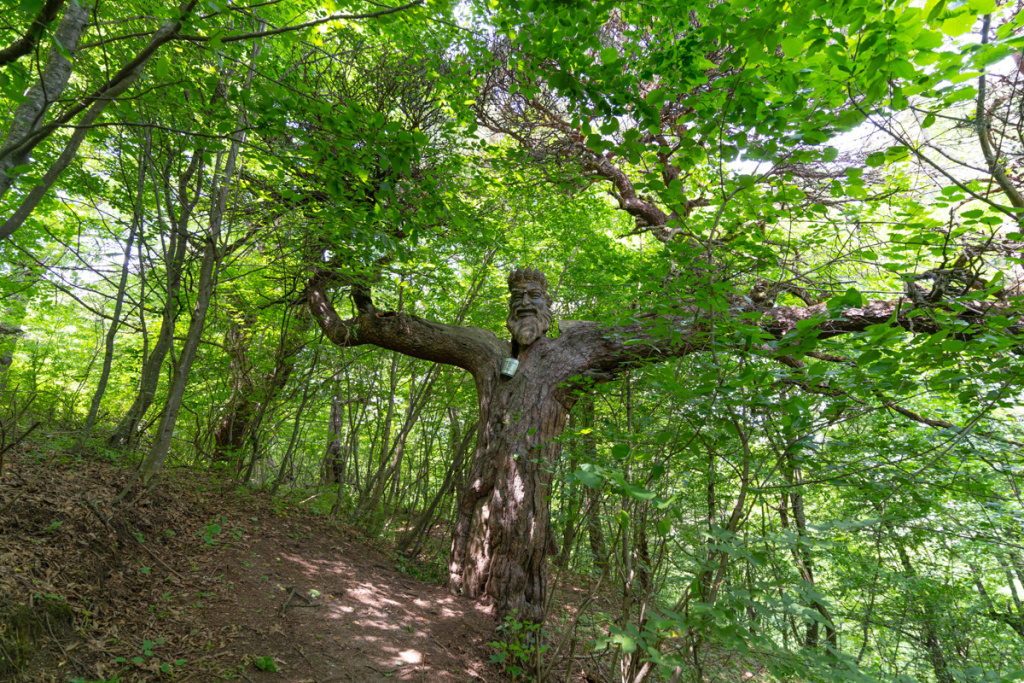
In 1966 the family of the Armenian sculptor Ara Sargsyan rested on the slopes of a forested mountain in Dilijan, at Aghasi Khanjyan's government summer cottage. When walking near the cottage, the sculptor noticed a huge tree and decided to give it a "human form".
This is how a very unusual sculpture "The King of the Forest" was created, which blended with Dilijan forests. The forest king or forest deity, by spreading his arms wide and as if embracing the whole forest, protects the forest inhabitants from all kinds of evil spirits.
Any other questions?
Our specialists will contact you as soon as possible




